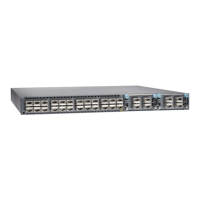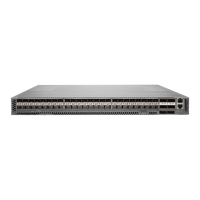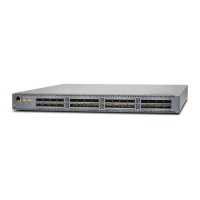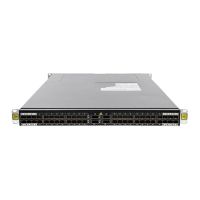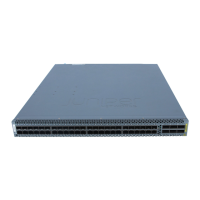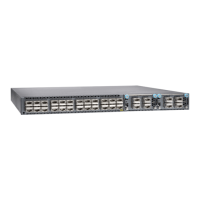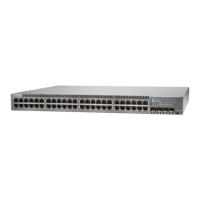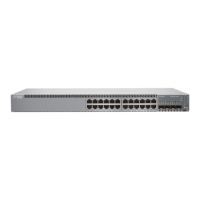QFX5110-48S Port Panel
The port panel of the QFX5110-48S is primarily comprised of 48 small form-factor
pluggableplus (SFP+) and 4 quad small form-factor pluggable solution (QSFP28) ports.
It also provides a central location for the Precision Time Protocol (PTP) connections to
a grandmaster clock.
This topic describes:
•
Switch Overview on page 27
•
Network Ports on page 28
•
Channelizing Interfaces on page 28
•
Virtual Chassis and Virtual Chassis Fabric on page 28
Switch Overview
The port panel of the QFX5110-48S supports 48 logical 10-GbE ports when operating as
a standalone switch. These data ports (0 through 47) support either 1-Gbps or 10-Gbps
SFP+ transceivers. You can also use SFP+ DAC cables and 10-Gbps active optical cables
(AOC) in any access port. Starting in Junos OS Release 18.3R1, the 10-GbE ports also
support 100 Mbps.
The remaining 4 QSFP28 ports (48 through 51) support speeds of 40 GbE or 100 GbE.
Each port can be configured as an independent 100-GbE port or as an independent
40-GbE port. These port are usually used as uplinks or Virtual Chassis Ports (VCP) on
QFX5110 Virtual Chassis or Virtual Chassis Fabric (VCF). In 40-GbE mode, these ports
can be channelized using QSFP+ to SFP+ DAC breakout (DACBO) cables.
The port panel also provides PTP connections to a grandmaster clock (requires Junos
OS Release 18.1R1). There are also 10-MHz pulses-per-second (PPS) SubMiniature B
(SMB) input and output connections to measure the timing drift to and from the
grandmaster clock.
Figure 3 on page 27 shows the port panel of the QFX5110-48S.
Figure 3: QFX5110-48S Port Panel
4—1— 4 QSFP28 portsElectrostatic discharge (ESD) terminal
5—2— Output clock at 10 MhzRJ-45 connection to grandmaster clock
6—3— 1 pulse per second (PPS) output connection48 SFP+ ports
27Copyright © 2019, Juniper Networks, Inc.
Chapter 1: Overview
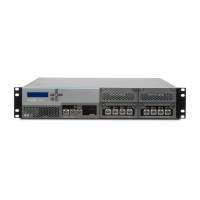
